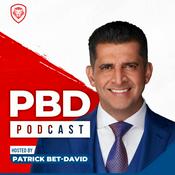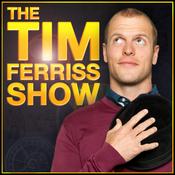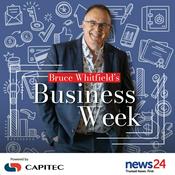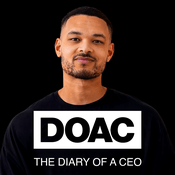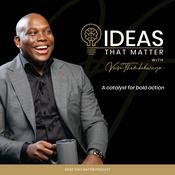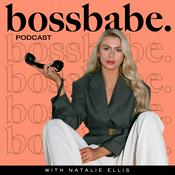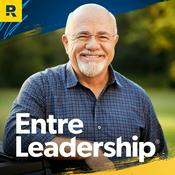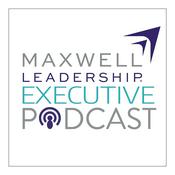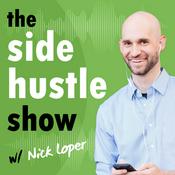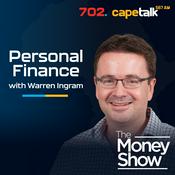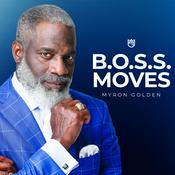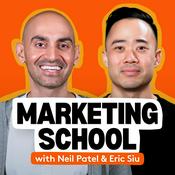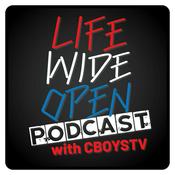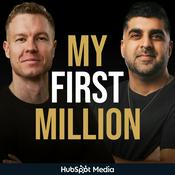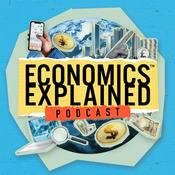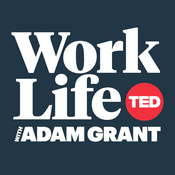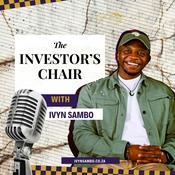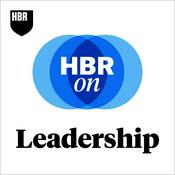777 episodes

658R: How to Help Change Happen Faster, with Frances Frei
2025/12/22 | 34 mins.
Frances Frei: Move Fast & Fix Things Frances Frei is a professor at Harvard Business School. Her research investigates how leaders create the context for organizations and individuals to thrive by designing for excellence in strategy, operations, and culture. She regularly works with companies embarking on large-scale change and organizational transformation, including embracing diversity and inclusion as a lever for improved performance. In 2017, Frances served as Uber’s first senior vice president of leadership and strategy to help the company navigate its very public crisis in leadership and culture. Her partner Anne Morriss and her are the authors of Uncommon Service and The Unapologetic Leader’s Guide to Empowering Everyone Around You. They are also hosts of Fixable, a leadership advice podcast from the TED Audio Collective, and they are recognized by Thinkers50 as among the world’s most influential business thinkers. Their newest book is Move Fast & Fix Things: The Trusted Leader’s Guide to Solving Hard Problems. A lot of us assume that going fast is reckless. There are certainly times when that’s the case, but it’s also true that leaders going too slow at the wrong time can make things worse. In this conversation, Frances and I discuss how to do a better job of moving quickly when it’s time to address the toughest problems. Key Points Many of us believe that going fast is reckless and going slow is righteous. While there are times that is true, there are many examples where it’s not. The fastest way to speed up your company is to empower more people to make more decisions. Dare to be bad at something. Deciding what not to address allows you to go faster at what you’re best at. Two key elements of completing work are work-in-progress and cycle time. Most leaders address cycle time first and miss the more substantial work-in-progress opportunities. Create a way to fast-track projects that become important and build this into the culture of the organization. Resources Mentioned Move Fast & Fix Things: The Trusted Leader’s Guide to Solving Hard Problems by Frances Frei and Anne Morriss Interview Notes Download my interview notes in PDF format (free membership required). Discover More Activate your free membership for full access to the entire library of interviews since 2011, searchable by topic. To accelerate your learning, uncover more inside Coaching for Leaders Plus.

763: Leading with Poise When the Stakes are High, with Eileen Collins
2025/12/15 | 39 mins.
Eileen Collins: Through the Glass Ceiling to the Stars Colonel Eileen M. Collins, USAF (retired), earned a place in history as the first American woman to pilot, and later to command, a space mission. She flew on the space shuttle four times, twice as commander – including the 2005 “return to flight” mission after the tragic Columbia accident. She is the subject of the documentary movie Spacewoman and author of the book Through the Glass Ceiling to the Stars: The Story of the First American Woman to Command a Space Mission (Amazon, Bookshop)*. We all have times in our careers where all eyes are on us. In this conversation, Eileen and I explore the critical moments of her career and how she stayed grounded while soaring among the stars. Key Points Until we are tested, we don’t know what we are capable of. Nerves creep in at times for all of us. When they do, it’s helpful to think about representing your role instead of representing yourself. When decisions become difficult, always come back to, “What’s the mission?” Train for the skill, not for the task. During high-stakes times, remember your family and personal life. They will help you stay grounded. Resources Mentioned Through the Glass Ceiling to the Stars: The Story of the First American Woman to Command a Space Mission by Eileen Collins (Amazon, Bookshop)* Spacewoman documentary, featuring Eileen Collins Interview Notes Download my interview notes in PDF format (free membership required). Related Episodes How to Lead and Retain High Performers, with Ruth Gotian (episode 567) The Way to Handle Q&A, with Matt Abrahams (episode 681) How to Start the Top Job, with Scott Keller (episode 752) Discover More Activate your free membership for full access to the entire library of interviews since 2011, searchable by topic. To accelerate your learning, uncover more inside Coaching for Leaders Plus.

762: Show Up Better, Faster, with Claude Silver
2025/12/08 | 37 mins.
Claude Silver: Be Yourself at Work Claude Silver is on a mission to revolutionize leadership, talent, and workplace culture. She is Chief Heart Officer at VaynerX and partners with CEO Gary Vaynerchuk to drive their success. Claude has earned Campaign US’s Female Frontier Award, and AdWeek’s Changing the Game Award and she’s the author of Be Yourself at Work: The Groundbreaking Power of Showing Up, Standing Out, and Leading from the Heart (Amazon, Bookshop)*. We’ve all heard the advice to be ourselves at work. It’s easier said than done. In this conversation, Claude and I explore how we can actually move past some of the unhelpful self-talk so that we can show up better, faster. Key Points We all have songs that play in our heads. When the song isn’t working, it’s time to change it. Labels are for soup cans, not people. Stop treating negative self-talk as gospel. Begin by identifying the label you’ve put on yourself that’s harming you. When it’s hard to see a harmful label, use times of either reflection or agitation to help surface it. Find the internal evidence for this label and record what confirms this belief and also what challenges it. If that’s hard, invite someone else (a partner, friend, or therapist) to help you see it more objectively. Evolve by creating a new mantra for who you are becoming. If it doesn’t seem doable today, ask yourself if you can envision it being true in the future. Resources Mentioned Be Yourself at Work: The Groundbreaking Power of Showing Up, Standing Out, and Leading from the Heart by Claude Silver (Amazon, Bookshop)*. Interview Notes Download my interview notes in PDF format (free membership required). Related Episodes How to Tame Your Inner Critic, with Tara Mohr (episode 232) How to Stand Up for Yourself, with Sunita Sah (episode 715) When It Feels Like You Don’t Belong, with Muriel Wilkins (episode 756) Discover More Activate your free membership for full access to the entire library of interviews since 2011, searchable by topic. To accelerate your learning, uncover more inside Coaching for Leaders Plus.

Listener Survey Results
2025/12/04 | 25 mins.
Dave shares the results of the 2025 listener survey and previews what’s next for Coaching for Leaders. If you’re not already getting the weekly update and wish to receive Dave’s forthcoming FocusFive messages, join the free membership for access.

761: Notice Disruption and Innovate Through It, with Steve Blank
2025/12/01 | 35 mins.
Steve Blank: Blind to Disruption Steve Blank is an Adjunct Professor at Stanford and co-founder of the Gordian Knot Center for National Security Innovation. Credited with launching the Lean Startup movement and the curriculums for the National Science Foundation Innovation Corps and Hacking for Defense and Diplomacy, he’s changed how startups are built, how entrepreneurship is taught, how science is commercialized, and how companies and the government innovate. Steve is the author of The Four Steps to the Epiphany and The Startup Owner’s Manual and is the author of his recent article at steveblank.com: Blind to Disruption: The CEOs Who Missed the Future. Leaders may see the future coming, but we aren’t always incentivized to act on it. In this conversation, Steve and I discuss what we can learn from the common patterns of disruption so we don’t miss what’s next. Key Points In the 1890s, there were approximately 4,000 carriage and wagon makers in the United States. Only one company made the transition to automobiles. In each of the three companies that survived, it was the founders, not hired CEOs, that drove the transition. Studebaker recognized that it wasn’t in the business of carriages; it was in the business of mobility. Clayton Christensen taught us that disruption begins with inferior products that incumbents don’t take seriously. The real problem isn’t that companies can’t see the future. It’s that they are structurally disincentivized to act on it. Parsing innovation theatre vs. innovation means paying attention to what’s actually shipping. If nothing is and you want to innovate, look elsewhere. Bubbles in the market are normal. Timing may be off, but that doesn’t mean disruption isn’t happening. Resources Mentioned Blind to Disruption: The CEOs Who Missed the Future by Steve Blank Related Episodes How to Start Seeing Around Corners, with Rita McGrath (episode 430) How to Build an Invincible Company, with Alex Osterwalder (episode 470) How to Pivot Quickly, with Steve Blank (episode 476) Discover More Activate your free membership for full access to the entire library of interviews since 2011, searchable by topic. To accelerate your learning, uncover more inside Coaching for Leaders Plus.
More Business podcasts
Trending Business podcasts
About Coaching for Leaders
Listen to Coaching for Leaders, PBD Podcast and many other podcasts from around the world with the radio.net app
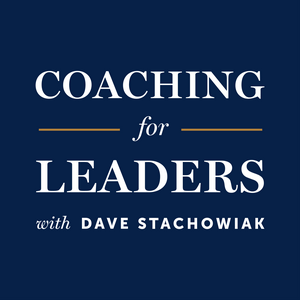
Get the free radio.net app
- Stations and podcasts to bookmark
- Stream via Wi-Fi or Bluetooth
- Supports Carplay & Android Auto
- Many other app features
Get the free radio.net app
- Stations and podcasts to bookmark
- Stream via Wi-Fi or Bluetooth
- Supports Carplay & Android Auto
- Many other app features


Coaching for Leaders
download the app,
start listening.
